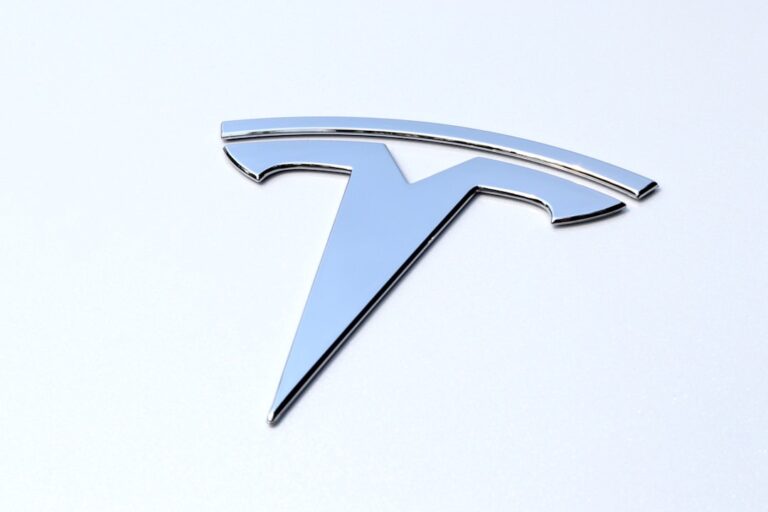
**Title: Tesla’s Energy Division: Pioneering the Future of Sustainable Power** **
Tesla, Inc., widely recognized for its electric vehicles, has also made significant strides in the energy sector through its Tesla Energy division. Established in 2015, this branch focuses on renewable energy solutions, including solar energy products and energy storage systems. The division aims to accelerate the world’s transition to sustainable energy by providing innovative technologies that harness and store renewable energy.
Tesla Energy’s flagship products, such as the Solar Roof and Powerwall, are designed to empower consumers to generate and manage their own energy, thereby reducing reliance on fossil fuels and contributing to a cleaner environment. The vision behind Tesla Energy aligns with the company’s overarching mission to create a sustainable future. By integrating energy generation and storage, Tesla seeks to offer a comprehensive solution that not only meets the energy needs of consumers but also promotes environmental stewardship.
As the world grapples with climate change and the urgent need for sustainable practices, Tesla Energy stands at the forefront of this transformation, positioning itself as a leader in the renewable energy landscape. **
Current Market Position and Performance**
As of late 2023, Tesla Energy has carved out a notable position in the renewable energy market. The division has experienced substantial growth, driven by increasing consumer demand for sustainable energy solutions. According to recent reports, Tesla Energy’s revenue has surged, with estimates suggesting a year-over-year growth rate of over 50%.
This impressive performance is attributed to the rising adoption of solar technology and energy storage systems among residential and commercial customers alike. Tesla’s market share in the solar energy sector has also expanded significantly. The company is now one of the top solar providers in the United States, competing with established players like Sunrun and Vivint Solar.
The integration of solar products with Tesla’s electric vehicles further enhances its market appeal, creating a unique ecosystem that encourages customers to invest in both electric mobility and renewable energy solutions. This synergy not only boosts sales but also reinforces Tesla’s brand as a pioneer in sustainable technology. **
Key Takeaways
- Tesla Energy Division focuses on sustainable energy solutions including solar, storage, and grid services.
- Tesla’s Energy Division has shown strong growth and performance in recent years, with increasing demand for renewable energy solutions.
- Key factors driving growth in the energy sector include increasing awareness of climate change, government incentives, and advancements in technology.
- Tesla’s strategic initiatives and investments in energy include the development of new products and expansion of its energy storage business.
- Forecasting growth in Tesla’s Energy Division is optimistic, with the potential for increased market share and profitability in the coming years.
Key Factors Driving Growth in the Energy Sector**

Several key factors are propelling growth in Tesla’s energy division. First and foremost is the global shift towards renewable energy sources, driven by increasing awareness of climate change and the need for sustainable practices. Governments worldwide are implementing policies that incentivize the adoption of clean energy technologies, creating a favorable environment for companies like Tesla Energy to thrive.
Additionally, advancements in technology have made renewable energy solutions more accessible and affordable. The cost of solar panels has decreased significantly over the past decade, making it easier for consumers to invest in solar energy systems. Furthermore, innovations in battery technology have enhanced the efficiency and storage capacity of energy systems, allowing users to maximize their energy usage and reduce dependence on traditional power grids.
National Renewable Energy Laboratory These technological advancements are crucial in driving consumer interest and adoption of Tesla’s energy products.
Tesla’s Strategic Initiatives and Investments in Energy**
| Initiative/Investment | Description | Impact |
|---|---|---|
| Solar Energy | Tesla’s acquisition of SolarCity and development of solar products | Expansion of renewable energy solutions |
| Energy Storage | Development of Powerwall and Powerpack for energy storage | Facilitation of renewable energy integration |
| Electric Vehicles | Investment in electric vehicle technology and infrastructure | Reduction of carbon emissions |
| Grid Services | Offering grid services through energy products | Support for grid stability and reliability |
Tesla has undertaken several strategic initiatives to bolster its presence in the energy sector. One of the most significant moves has been the expansion of its manufacturing capabilities. The company has invested heavily in its Gigafactories, which produce batteries and solar products at scale.
This vertical integration not only reduces production costs but also ensures a steady supply of components necessary for its energy solutions. Moreover, Tesla is actively pursuing partnerships with utility companies and other stakeholders to enhance its market reach. Collaborations with local governments and organizations have enabled Tesla to deploy its energy products in various regions, further solidifying its position as a leader in renewable energy.
The company’s commitment to research and development is also noteworthy; Tesla continues to innovate and improve its product offerings, ensuring that it remains competitive in an ever-evolving market. **
Forecasting Growth in Tesla’s Energy Division**
Looking ahead, analysts predict robust growth for Tesla’s energy division over the next several years. With global demand for renewable energy solutions expected to rise significantly, Tesla is well-positioned to capitalize on this trend. Market forecasts suggest that the solar energy market could reach $223 billion by 2026, with Tesla likely capturing a substantial share due to its established brand and innovative products.
Furthermore, as electric vehicle adoption continues to grow, so too will the demand for integrated energy solutions that combine solar power with battery storage. Tesla’s unique approach of offering a complete ecosystem—where consumers can generate, store, and utilize their own energy—sets it apart from competitors. This holistic strategy is anticipated to drive customer loyalty and repeat business, contributing to sustained revenue growth for Tesla Energy.
**
Potential Challenges and Risks for Tesla’s Energy Division**

Volatility of Raw Material Prices
One significant risk is the volatility of raw material prices, particularly lithium and cobalt, which are essential for battery production. Fluctuations in these prices can affect production costs and ultimately impact profitability.
Intensifying Competition in the Renewable Energy Sector
Additionally, competition within the renewable energy sector is intensifying. As more companies enter the market with innovative solutions, Tesla must continuously innovate to maintain its competitive edge. The emergence of new technologies could disrupt existing business models, necessitating agility and adaptability from Tesla’s leadership.
Regulatory Challenges
Regulatory challenges also pose potential risks for Tesla Energy. Changes in government policies or incentives related to renewable energy could affect consumer adoption rates and overall market dynamics. Staying ahead of regulatory shifts will be crucial for Tesla to navigate potential obstacles effectively.
Impact of Regulatory and Policy Changes on Tesla’s Energy Division**
Regulatory frameworks play a pivotal role in shaping the landscape for renewable energy companies like Tesla. Policies that promote clean energy adoption—such as tax credits, rebates, and net metering—have historically bolstered demand for solar products and energy storage systems.
For instance, recent discussions around phasing out certain tax incentives for solar installations could deter potential customers from investing in solar technology. Conversely, if governments continue to prioritize renewable energy through supportive legislation, it could create a favorable environment for growth within Tesla’s energy division. Moreover, international trade policies can also impact Tesla’s ability to source materials or sell products across borders.
Tariffs on imported components or changes in trade agreements could affect production costs and pricing strategies. Therefore, staying informed about regulatory developments is essential for Tesla to navigate these complexities successfully. **
Conclusion and Future Outlook for Tesla’s Energy Division**
In conclusion, Tesla’s energy division is poised for significant growth as it continues to innovate and expand its product offerings within the renewable energy sector. With a strong market position bolstered by strategic initiatives and investments, Tesla is well-equipped to capitalize on the increasing demand for sustainable energy solutions. However, it must remain vigilant against potential challenges such as raw material volatility, competition, and regulatory changes.
As society increasingly prioritizes sustainability and seeks alternatives to fossil fuels, Tesla Energy stands at the forefront of this transition. The company’s commitment to providing integrated solutions that empower consumers to generate and manage their own energy will likely resonate with environmentally conscious customers. Looking ahead, if Tesla can navigate the challenges effectively while leveraging its strengths, it will undoubtedly play a crucial role in shaping the future of sustainable power.
**Keywords:** Tesla Energy Division, renewable energy solutions, solar technology adoption, battery storage systems, market growth forecast
According to a recent podcast episode on tslainvestors.com, Tesla is at a crossroads with its energy division growth forecast.
With competition heating up in the renewable energy sector, Tesla investors are closely watching to see how the company will navigate this changing landscape.
Click for the latest Tesla products ready to ship right now!
FAQs
What is Tesla’s energy division?
Tesla’s energy division focuses on developing and selling energy products such as solar panels, solar roofs, and energy storage solutions like the Powerwall and Powerpack.
What is the growth forecast for Tesla’s energy division?
The growth forecast for Tesla’s energy division is positive, with the company aiming to expand its market share in the renewable energy sector and increase its sales of solar products and energy storage solutions.
What factors contribute to the growth forecast for Tesla’s energy division?
Factors contributing to the growth forecast for Tesla’s energy division include increasing demand for renewable energy solutions, advancements in solar technology, and the company’s efforts to expand its product offerings and market reach.
How does Tesla plan to achieve growth in its energy division?
Tesla plans to achieve growth in its energy division through strategic partnerships, innovative product development, expansion into new markets, and a focus on improving the affordability and accessibility of its energy products.
What impact could the growth of Tesla’s energy division have on the renewable energy industry?
The growth of Tesla’s energy division could have a significant impact on the renewable energy industry by driving further innovation, increasing competition, and potentially accelerating the adoption of solar and energy storage solutions on a global scale.
